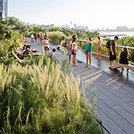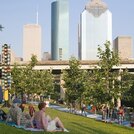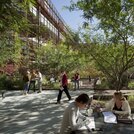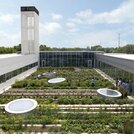Case Study Brief
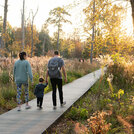
Houston Arboretum and Nature Center, Phase 1
Houston, Texas
“This large arboretum in downtown Houston represents a range of climate solutions including enhanced natural vegetative buffers, plantings that support biodiversity, wildlands preservation, and healthy soil management. By 2012, more than half of the tree canopy on-site had been lost; the redesign equipped the arboretum to withstand future climate shocks and provide a unique spatial experience not common in arboreta. ”


